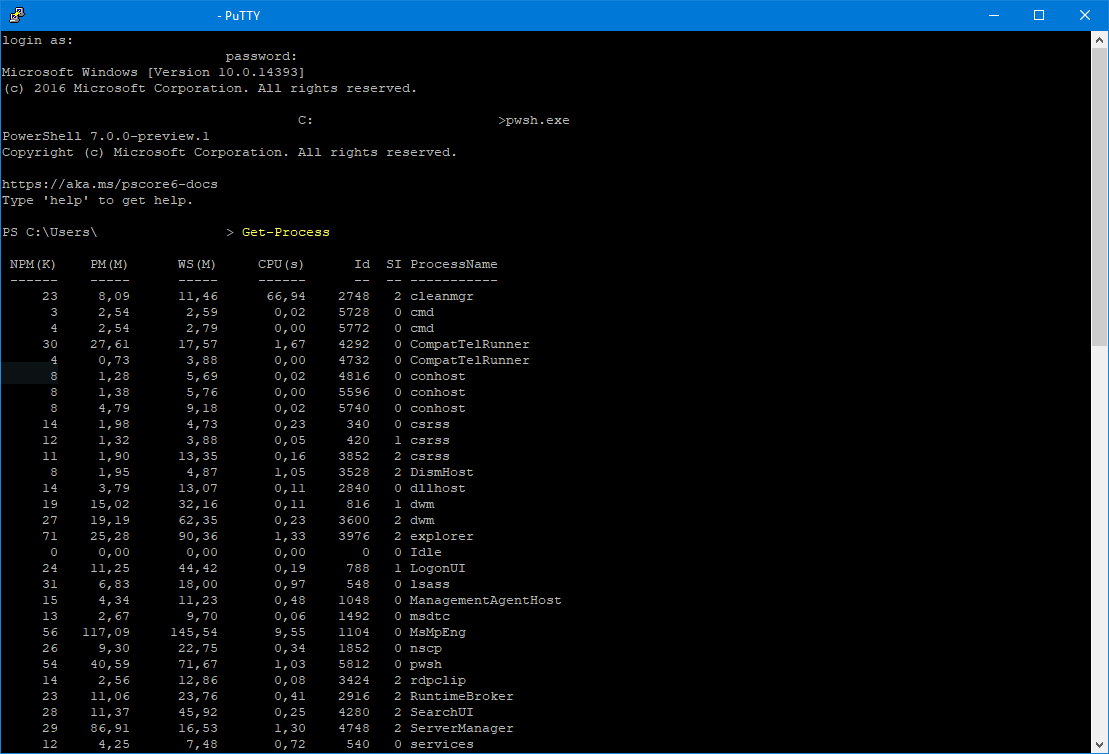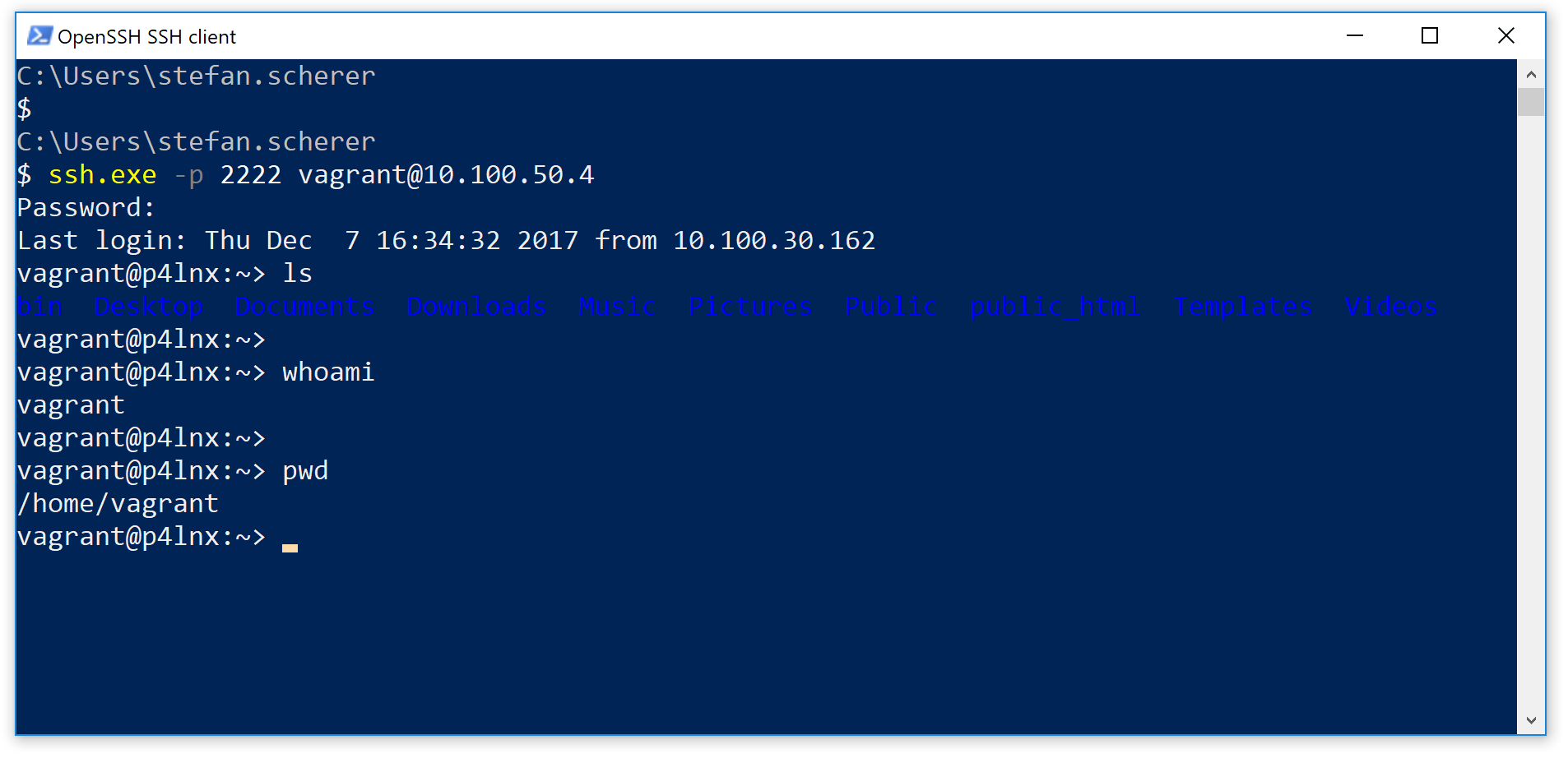
- #POWERSHELL OPENSSH HOW TO#
- #POWERSHELL OPENSSH INSTALL#
- #POWERSHELL OPENSSH PORTABLE#
- #POWERSHELL OPENSSH CODE#
- #POWERSHELL OPENSSH PASSWORD#
It remains to set this up in the SSH-Agent service to automatically provide access. Test that you can connect to the repository when using the SSH private key directly with this command: ssh -i path/to/ssh/private/key -T example, our command could be: ssh -i C:\Users\chastie/.ssh\id_ed25519_git_demo -T -i C:\Users\chastie/.ssh\id_ed25519_git_demo -T have now established an SSH key pair that can authenticate to our Git remote provider.

In GitLab, you can do this by adding it under the SSH Keys section of your user settings: In GitLab (or the appropriate location of your Git remote repository), you can now add this public key to your user profile. You can then select this and copy it with a right-click of your mouse:
#POWERSHELL OPENSSH CODE#
You can read this key with the following command: cat path\to\ssh\key.pubįor example, our code is likely: cat C:\Users\chastie/.ssh\id_ed25519_git_demo.pub You will then be shown the key’s randomart image to confirm creation:Ĭopy the contents of the public key to your clipboard.
#POWERSHELL OPENSSH PASSWORD#
You can also add a password if you like or leave this blank: In our example, we rename the file from the default id_ed25519 to id_ed25519_git_demo: Leave it blank to stick with the default. You can choose another storage location if you wish or rename the file by entering a new file path to save the key. For our example, we will create an ED25519 key, but you can create other keys such as an RSA.Ĭreate a new SSH ED25519 key, giving it a useful comment: ssh-keygen -t ed25519 -C "Git-Demo"īy default, the file will be stored in your local user’s SSH repository in Windows. Using a command line tool such as Bash or PowerShell, you should be able to follow these steps to create a local SSH key pair. Setting up an SSH Key Pair to Access a Git Remote Provider To avoid needing to restart your system to get the service running for the first time, execute this command: start-ssh-agent.cmd
#POWERSHELL OPENSSH INSTALL#
Using an elevated PowerShell window (run as admin), execute the following command to install the SSH-Agent service and configure it to start automatically when you log into your machine: Get-Service ssh-agent | Set-Service -StartupType Automatic -PassThru | Start-Service


#POWERSHELL OPENSSH HOW TO#
How to Install the SSH-Agent Service in Windows We will use a GitLab repository for this article however, the process will be similar for other Git management providers.

We will continue to partner with NoMachine on development in this public repository. With this initial milestone complete, we are now making the code publicly available and open for public contributions. The NoMachine port was based on OpenSSH 5.9, so we’ve spent the time since our initial announcement working with NoMachine to bring this port in sync with OpenSSH 7.1. Of the many options available, one clearly stood out: the previous work that NoMachine had already published in bringing OpenSSH to Windows.
#POWERSHELL OPENSSH PORTABLE#
Our objective was to not only port OpenSSH so that it worked well on Windows, but to openly contribute those changes back into the portable version of OpenSSH. Back in June, we announced our intentions to bring SSH to Windows by supporting and contributing to the OpenSSH community.


 0 kommentar(er)
0 kommentar(er)
